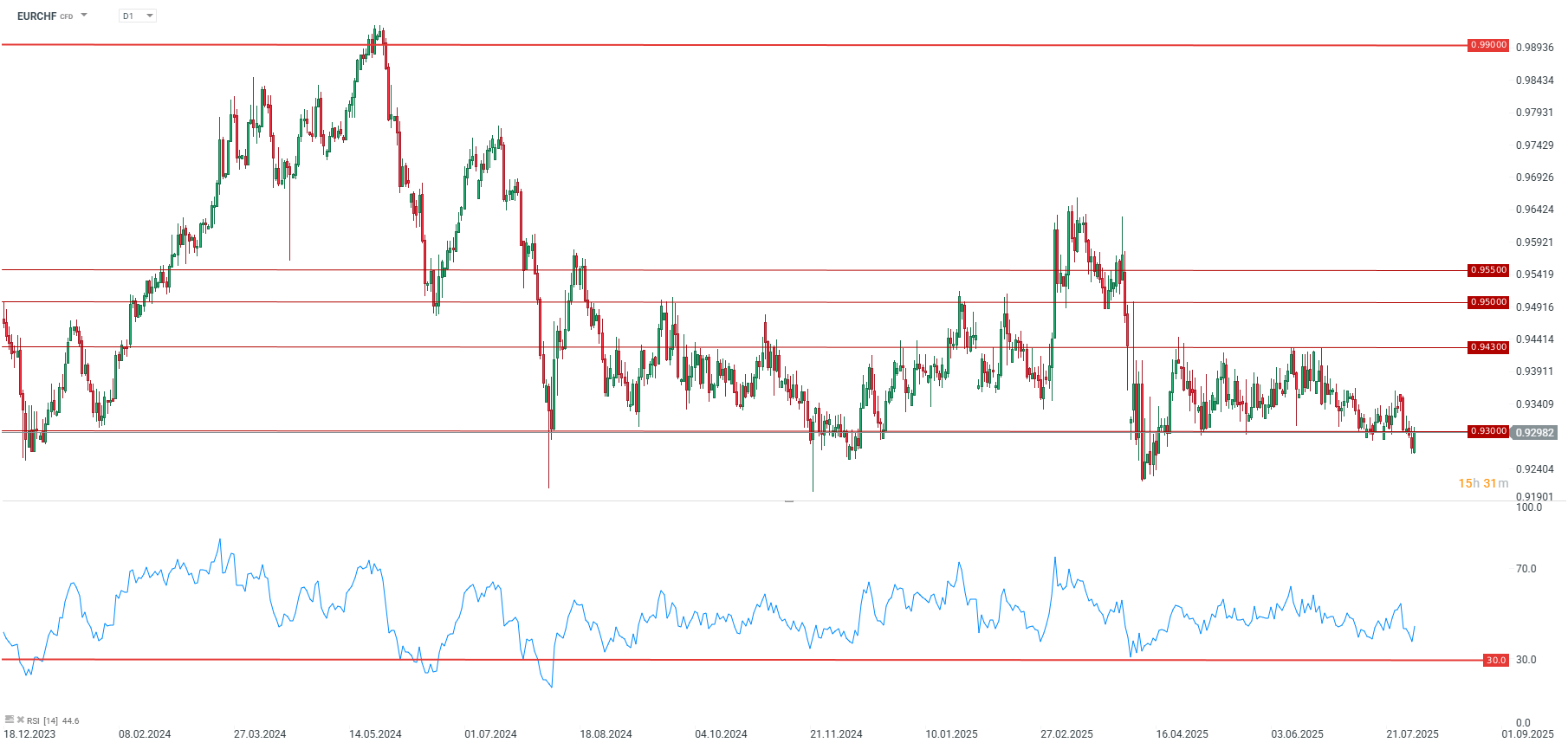Chart of The Day – EUR/CHF
One of the Highest US Tariffs Targets Switzerland
President Donald Trump has imposed a 39% tariff on goods imported from Switzerland, making it one of the highest US tariff rates. This is a higher rate than the initially announced 31% and significantly surpasses the tariffs levied on the EU, Japan, and South Korea (15%). The decision stems from the US administration’s efforts to reduce its trade deficit with Switzerland ($38 billion last year) and is intended to pressure companies to move production to the US and address global trade imbalances. The Swiss government has expressed “deep regret” and is currently attempting to negotiate a reversal of the decision. If negotiations are unsuccessful by August 7th, the new tariffs will come into force. The United States has also stated that any attempt to export through other channels will result in an additional 40% tariff on those products.
The new tariffs impact Switzerland’s key export sectors: pharmaceuticals (e.g., Novartis, Roche), watches (Swatch, Rolex), and confectionery (Lindt). These companies hold a strong position in the American market, and the US is the largest buyer of Swiss products outside of Europe. The new tariff is expected to lead to a decline in price competitiveness, lower sales, and—in the long term—potential shifts in production to other countries. The industrial lobby has called the tariff “dangerous” and warns of the risk of lasting structural problems for Switzerland’s export economy.
Monetary Outlook and Swiss Inflation
The latest inflation data for June indicates very low inflationary pressure, with the CPI at 0.0% year-on-year (y/y) and a monthly change of 0.2%. Inflation in food and non-alcoholic beverages is negative (-0.3% y/y). The Swiss National Bank (SNB) decided to cut interest rates to zero in June. Given the low inflation (which is linked to a strong franc) and economic challenges (tariffs and an overly strong franc), there is a chance that the SNB will implement another rate cut into negative territory in September. Only a clear rebound in inflation or a weakening of the franc would likely halt further cuts. It is important to note that the SNB has not recently suggested the possibility of currency interventions, which have only proven effective in the very short term in the past. Additionally, the SNB may not want to antagonize the United States, which has been highly critical of currency interventions.
Technical Situation for EUR/CHF
Following the tariff news, the Swiss franc weakened slightly against the euro. The EUR/CHF pair is currently trading near 0.93. The pair dropped to its lowest level since mid-April at the start of today’s session but is now seeing a rebound. The range from 0.9230 to 0.93 is a very strong support zone, but volatility in the pair remains quite limited. However, if pressure on the economy increases and the SNB decides to cut rates, the franc could weaken slightly against the euro or the dollar in the coming months.

The material on this page does not constitute financial advice and does not take into account your level of understanding, investment objectives, financial situation or any other specific needs. All information provided, including opinions, market research, mathematical results and technical analyzes published on the Website or transmitted To you by other means, it is provided for information purposes only and should in no way be construed as an offer or solicitation for a transaction in any financial instrument, nor should the information provided be construed as advice of a legal or financial nature on which any investment decisions you make should be based exclusively To your level of understanding, investment objectives, financial situation, or other specific needs, any decision to act on the information published on the Website or sent to you by other means is entirely at your own risk if you In doubt or unsure about your understanding of a particular product, instrument, service or transaction, you should seek professional or legal advice before trading. Investing in CFDs carries a high level of risk, as they are leveraged products and have small movements Often the market can result in much larger movements in the value of your investment, and this can work against you or in your favor. Please ensure you fully understand the risks involved, taking into account investments objectives and level of experience, before trading and, if necessary, seek independent advice.




